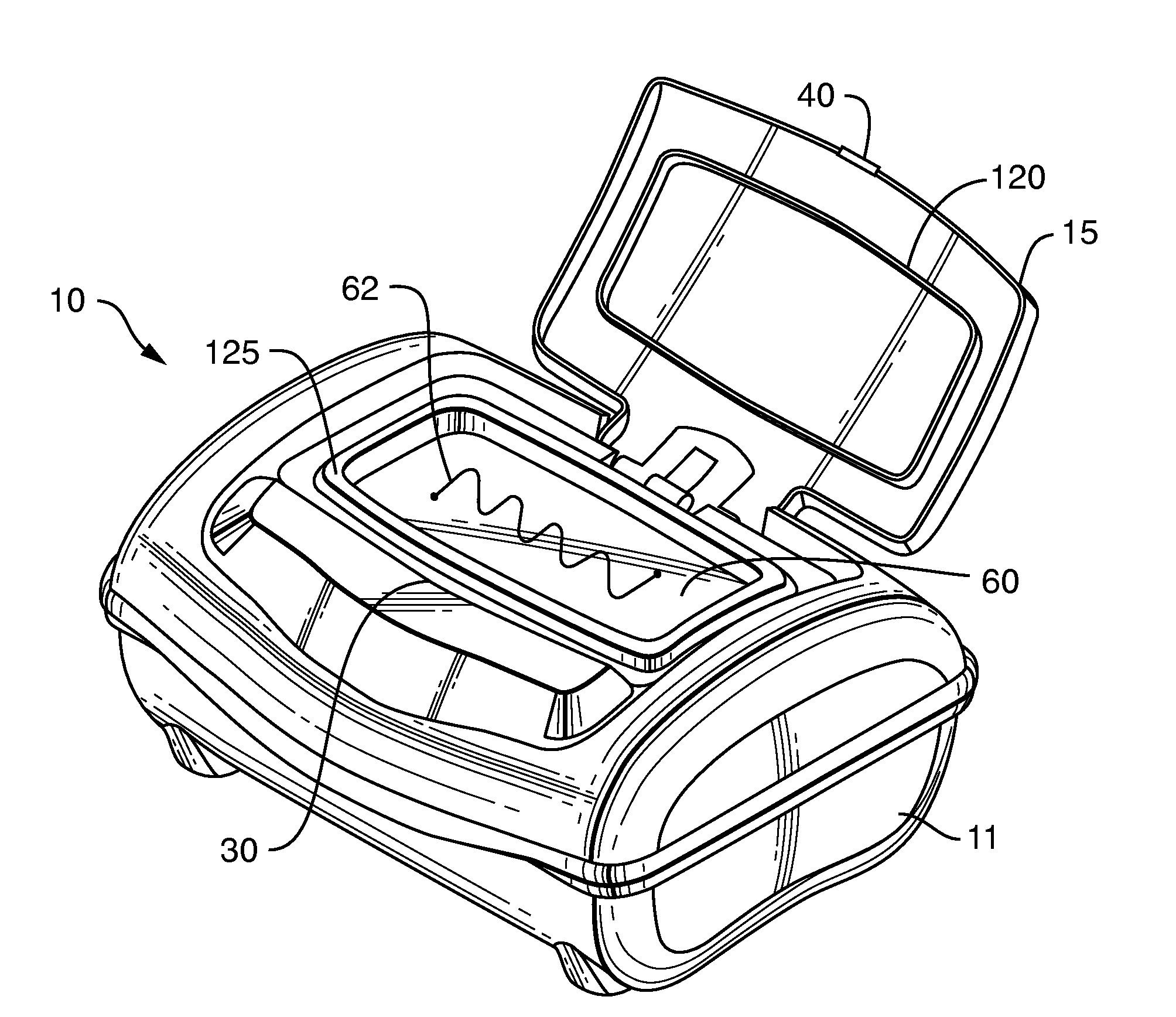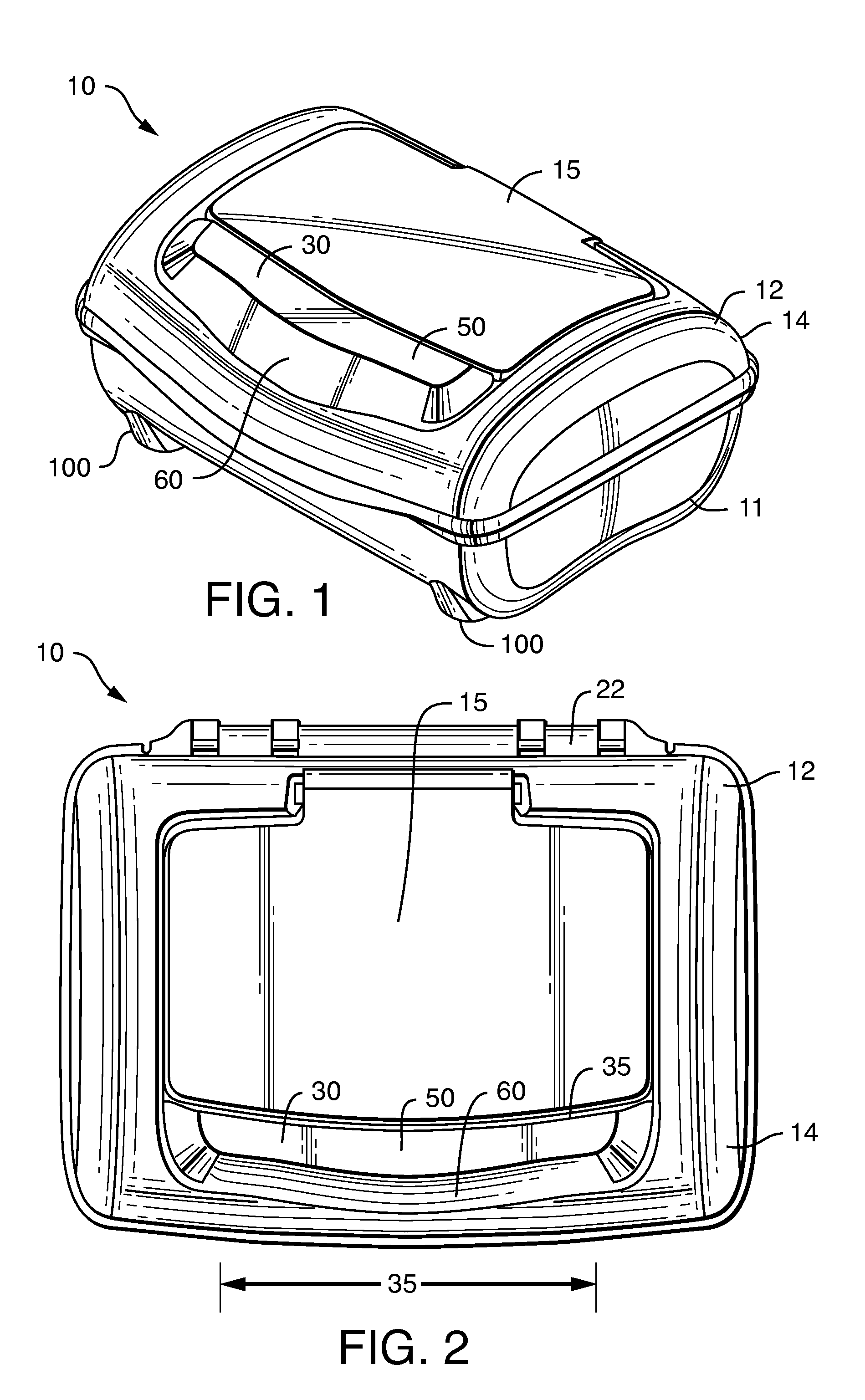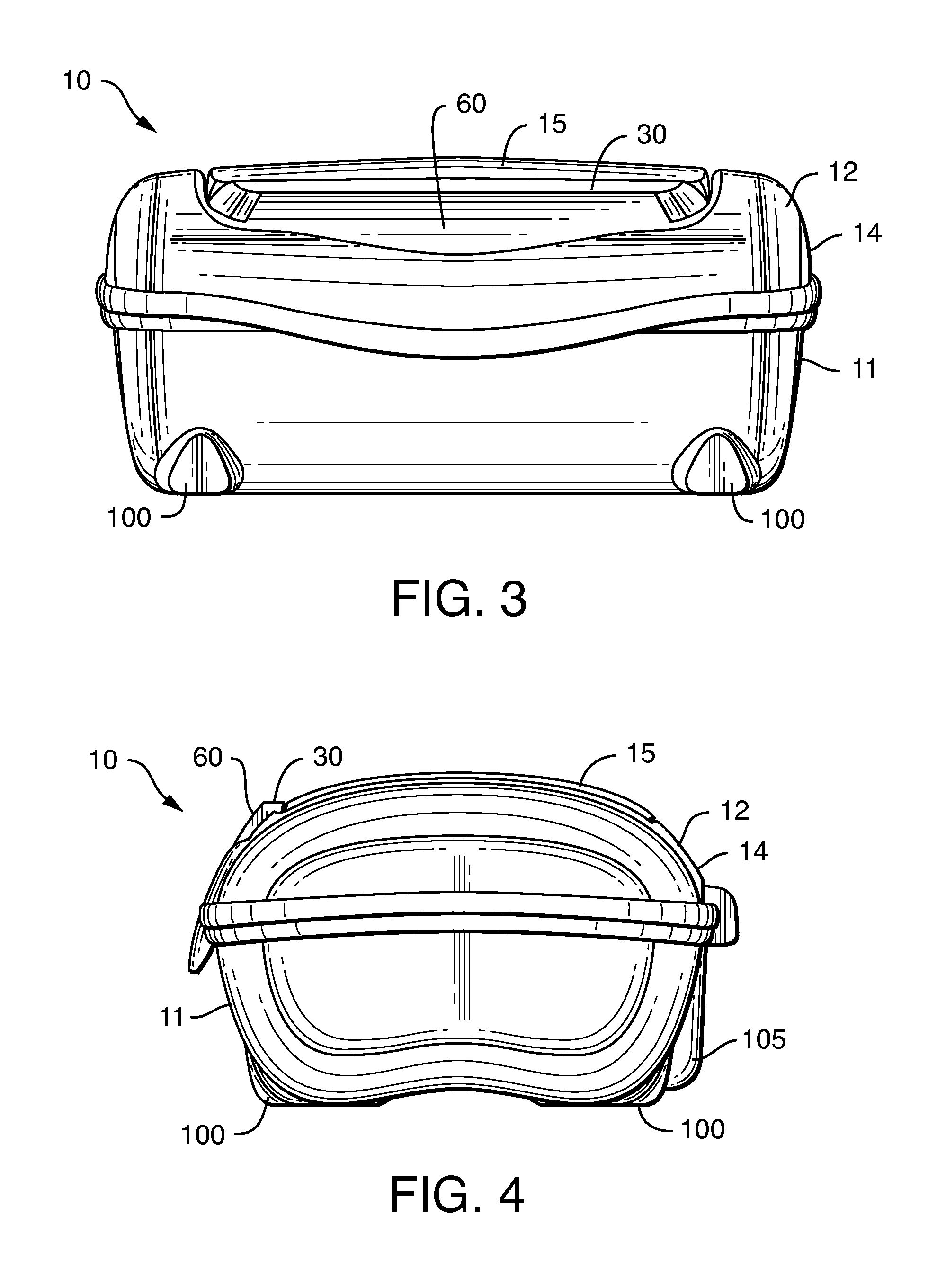Dispenser With a Wide Lid-Activation Button Having a Stabilizing Rib
a technology of stabilizing ribs and lids, which is applied in the direction of rigid containers, sealing, transportation and packaging, etc., can solve the problems of buttons not functioning properly, difficult for consumers to press or find, and the dispensing of wipes from such conventional containers is not completely satisfactory, so as to achieve a single-hand opening. , the effect of convenien
- Summary
- Abstract
- Description
- Claims
- Application Information
AI Technical Summary
Benefits of technology
Problems solved by technology
Method used
Image
Examples
example 1
[0055]The performance of the lid-activation button can be measured more directly by using a tensile testing machine to contact the lid-activation button with a domed-shaped probe to measure the force required to actuate the release of the lid top. This simulates the use of one's finger to press the lid-activation button to release the lid top open to gain access to the wipes for dispensing. In general, the measurement involves placing a container to be tested underneath a probe which is mounted specially to a tensile tester. A container is placed in a fixture that holds it in a predetermined location relative to the probe. The tensile tester lowers the probe down to press the lid-activation button at a predetermined speed and measures the peak load, in grams, required to open the lid top. The location of where the lid-activation button can be contacted laterally can be varied. The lid-activation button of the tested container is 96 mm wide. The two points of interest for the test ar...
example 2
[0063]The rigidity of the strengthening rib portion can be measured more directly by using a tensile testing machine to contact the lid-activation button with a flat-shaped probe to measure the force required to cause a deflection in the tub. In general, the measurement involves placing a container to be tested underneath a probe which is mounted specially to a tensile tester. A container is placed in a fixture that holds it in a predetermined location relative to the probe. The tensile tester lowers the probe down to contact the lid structure at a predetermined speed and measures the peak load, in grams, required to cause a deflection of the material of 3 mm.
[0064]To determine the rigidity benefits of the strengthening rib, containers as described herein were tested using the same procedure as described above. Testing was completed as described in the above procedure. Containers including a strengthening rib and containers that did not include the strengthening rib were tested. Ten...
PUM
| Property | Measurement | Unit |
|---|---|---|
| Fraction | aaaaa | aaaaa |
| Fraction | aaaaa | aaaaa |
| Fraction | aaaaa | aaaaa |
Abstract
Description
Claims
Application Information
 Login to View More
Login to View More - R&D
- Intellectual Property
- Life Sciences
- Materials
- Tech Scout
- Unparalleled Data Quality
- Higher Quality Content
- 60% Fewer Hallucinations
Browse by: Latest US Patents, China's latest patents, Technical Efficacy Thesaurus, Application Domain, Technology Topic, Popular Technical Reports.
© 2025 PatSnap. All rights reserved.Legal|Privacy policy|Modern Slavery Act Transparency Statement|Sitemap|About US| Contact US: help@patsnap.com



